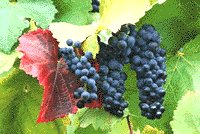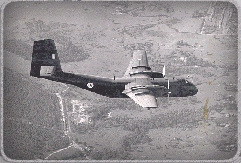|
|
||
|
|
Radschool Newsletter |
Vol 5 Page 8 |
|
|
||
|
Wines and Stuff. John Morley.
|
||
|
Wine - What is it?
In this issue we'll talk a little about wine and about how it is made. The obvious question leading from this is therefore "Just what is Wine?"
Although wine is traditionally thought of as fermented grape juice, it can be made from all sorts of common and some not so common foods. Things like fruits, vegetables, herbs and even flowers can be used to make wine, though, most wine drunk around the world is made from grapes. No matter what the wine is made from, for it to be wine there must be a fermentation process, that is, the sugar in the thing being made into wine must be transformed into alcohol. However, the amount or degree of alcohol produced is important. If the amount of alcohol in the resultant liquid is relatively low, the result is wine. If it is high, as a result of secondary processing, fortification or distillation, the result is something like port, vodka or gin.
The fermentation process itself cannot increase the alcohol content much past about 16%, because at that level the yeast dies and the fermentation process stops. To achieve higher levels of alcohol a distillation process is used. Some of the low alcohol liquid is heated, and as alcohol evaporates first, it is collected and the vapour re-condensed then added to more of the low alcohol liquid.
There are different colours of wine, reds, pink wines (also known as "rose" or sometimes "blush") and whites. Since the inside of a grape is more or less "white," red grapes can and are used to make white wine. To add colour to a wine, the wine maker allows the grape juice to mix with the skins during the early wine-making process. Red grapes can make white wine, but white grapes can't make red wine.
Wines can also be "fortified," "sparkling," or "still." In fortified wines (port for instance), brandy or concentrated alcohol is added to make the alcohol content higher (around 16 to 23 percent). Sparkling wines are the ones with bubbles, like Rinegolde. Still wines are the most "natural." Both still and sparkling wines tend to have alcohol contents between 7 and 15 percent.
Grapes can (and might still) be crushed by sticking them into a large vat and hopping in and stomping on them with your feet. But a more practical way is to use a machine which does the job a lot more hygienically and at the same time can removes the skins, seeds and stems. Depending on the variety of wine being made, the skins and seeds might be removed immediately from the juice. When making a red wine, the winemaker will leave the skins in the juice for a pre-determined time since skins and stems are an important source of "tannins" which affect wine's taste and maturity during the aging process. The skins also determine the colour of the wine. Maceration (the time spent while skins and seeds are left with the juice) could go on for a few hours or a few weeks.
When the wine maker is satisfied with the maceration process, the mixture will be pressed. One way to press the grapes is to use a "bladder press," a large cylindrical container that contains bags that are inflated and deflated several times, each time gently squeezing the grapes until all the juice has run free, leaving behind the unwanted solids. Another method is a centrifuge, ie, the mixture is spun dry. The oldest and still used in many small wineries is the Basket Press. It is the often used symbol of winemaking.
The mixture is then stored in (usually stainless steel) containers to ferment. If an oak flavour is required wood chips or battens may be added. The big old wooden storage barrels are being phased out in the larger wineries, a change bought about by economics. Grape juice is turned into alcohol by the process of "fermentation." When grapes are on the vine they are covered with yeast, mould and bacteria. By putting grape juice into a container at the right temperature, the yeast will turn the sugar in the juice into alcohol and carbon dioxide. The grape juice will have fermented. Yeast gives flavour to wine, however not all things on the outside of a grape are necessarily good for the production of good wine (for example, acetic bacteria on the grapes can cause the wine to turn to vinegar).
The winemaker commonly eliminates unwanted contaminants by using the "universal disinfectant," sulphur dioxide. Unfortunately, the sulphites which remain in the wine may cause a lot of discomfort to some wine drinkers, due to allergies etc, so some winemakers prefer not to do this, and purposely create wines that are subject to the vagaries (and different flavours) of yeast that is "wild,". The winemaker has many different yeast strains to choose from (and can use different strains at different times during the process). The most common wine yeast is Saccharomyces.
A good wine is a wine you like to drink!, and the best way to learn about wine is to drink it. And don’t forget, when ever you’re in the Tenterfield area, please drop in, we’d love to see you.
|
||
|
We wonder how many blokes and blokettes use their old service number as a password on their computer, quite a few we reckon, it’s one of those things you never forget. |
||
|
|
||
|
|
||
|
|
||
|
|
||
|
Kevin Stapleton, John Harris and David Muir-McCarey at the Brisbane reunion. |
||
|
|
||
|
Two bored casino dealers are waiting at a craps table. A very attractive lady comes in and wants to bet twenty thousand dollars on a single roll of the dice. She says, "I hope you don't mind, but I feel a lot luckier when I'm bottomless." With that she strips naked from the waist down, and rolls the dice while yelling, "Momma needs a new pair of panties!" She then begins jumping up and down and hugging each of the dealers. "YES! — I WIN! I WIN!" With that she picks up her money and clothes and quickly leaves. The dealers just stare at each other dumbfounded. Finally one of them asks, "What did she roll anyway?" The other answers, "I dunno, I thought YOU were watching!"
|
||
|
Someone who knows tells a story about a certain WOE, (who shall of
course remain nameless) who was at an also unnamed Sqn many years
ago and was asked by the EngO how a particular engine change was
going. The WOE walked out to the tarmac to annoy the sumpies who
were trying to get the aircraft serviceable again as quickly as
Seems this WOE had a habit of always annoying blokes on the line, and this day he demanded to know how long before the aircraft could fly again. “Won’t be long Sir” he was told, “We’re just hooking up the prop jettison cable now.”
Seems the WOE reported this to the EngO before he thought about what he had just been told. We hate to think what extra duties the poor old sumpies had to perform |
||
|
|
||
|
|
||



 they
could. The aircraft was a browny coloured thing with two engines,
bit like the one at left.
they
could. The aircraft was a browny coloured thing with two engines,
bit like the one at left.